The last time I wrote about the Fish Lips Kiss Heel and Toe was in June 2014 and I thought it was time to revisit this wonderful heel and toe construction in my Neptune’s Ocean Socks.
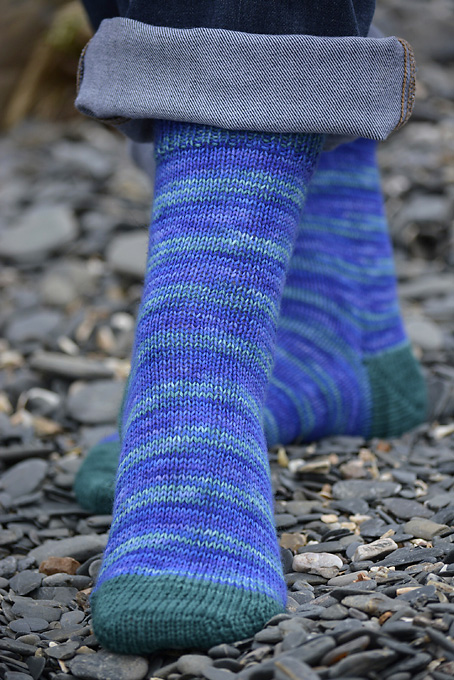
Fish Lips Kiss Heel is designed by Sox Therapist and is available on Ravelry.com. I read through the detailed instructions and watched the two stitch techniques on Youtube and then decided to use the heel construction with my normal basic sock pattern.
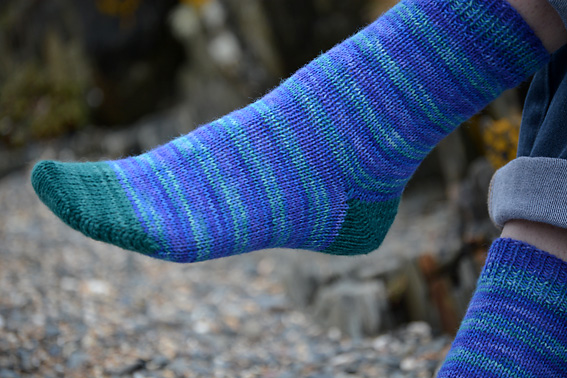
I chose one of my own glorious hand dyed sock yarns in the Neptune’s Ocean colour and combined it with an Araucania Ranco yarn in a deep teal from my stash for knitting the contrasting heels and toes for these socks.
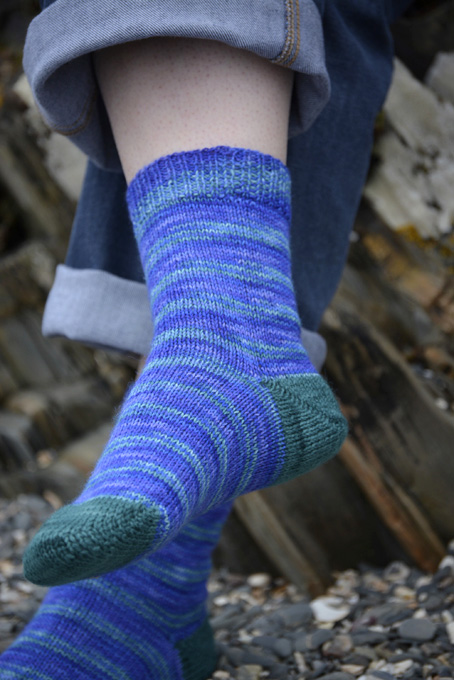
Cuff:
Casting on 60 stitches using the Neptune’s Ocean colour and joining into a round, I used 2.75mm double pointed needles to knit 14 rounds of k1, p1 rib.
Leg:
- Knit 45 rounds of stocking stitch.
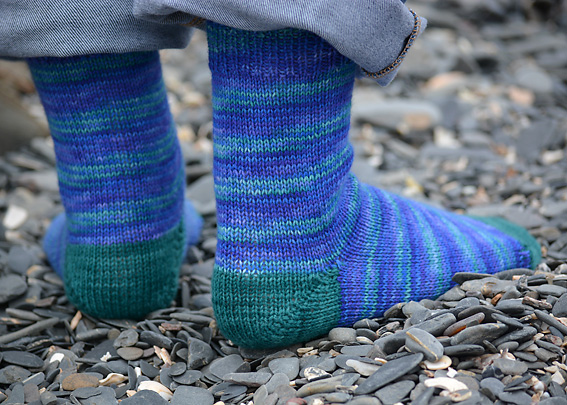
Fish Lips Kiss Heel:
I used the Deep Teal Araucania Ranco Sock Yarn to knit the heel.
At this point I was ready to follow Sox Therapist’s instructions for knitting the Fish Lips Kiss Heel from page 9 of her pattern.
The finished heel is comfortable and fits my heel neatly. More importantly, there isn’t a single gap in this heel and it looks great.
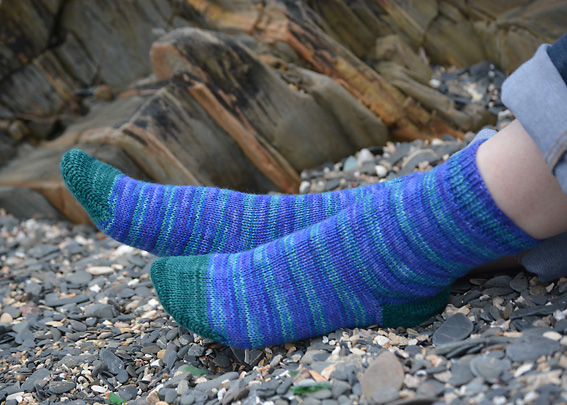
Foot:
When I knit these socks the first time I knit 44 rounds for the foot but decided that next time I would knit 46 rounds as I prefer my socks to be a bit looser than the original ones are. These socks have exactly 10% negative ease and I prefer a little less.
- Knit 46 rounds for the foot.
Using the contrast yarn for knitting the heel gave the same effect as knitting an afterthought heel so it meant that the patterning in the hand dyed Neptune’s Ocean sock yarn continued in the same way as it had in the leg along the foot. I think that this adds to the beauty of the finished socks.
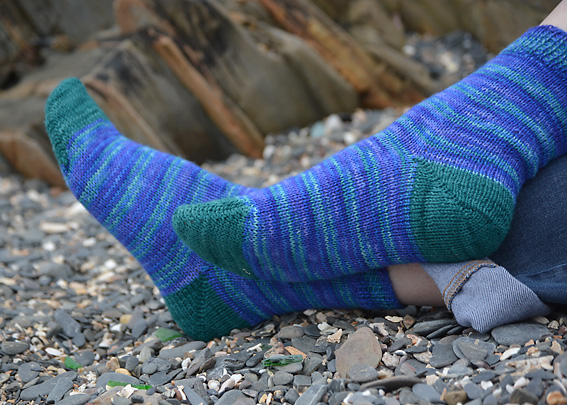
Toe:
Using the Deep Teal Araucania Ranco sock yarn to knit the toe.
I followed the instructions for knitting the Fish Lips Kiss Heel again to create the Toe shaping. When I had finished knitting the toe, I used kitchener stitch to graft the toe stitches to the instep stitches.
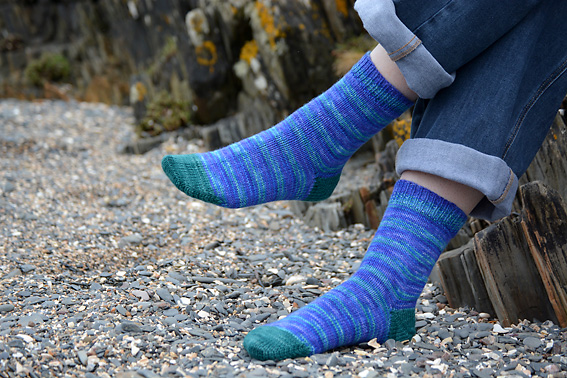
Finishing:
I did feel that the finished toe was a little bulky at the corners and I wondered if anyone has a solution for that. Do let me know if you have found one.
I sewed in all the loose ends of sock yarn.
Then soaked these socks in a wool wash for about 30 minutes then rinsed them. I blocked them on my wire sock blockers and carefully smoothed out the the bulky bit as much as possible.
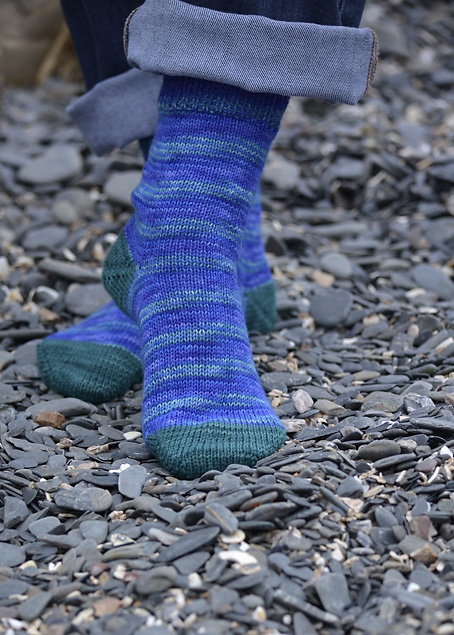
This is a great basic vanilla sock pattern and by using contrasting heels and toes it adds a delightfully simple twist as to how the finished socks look.
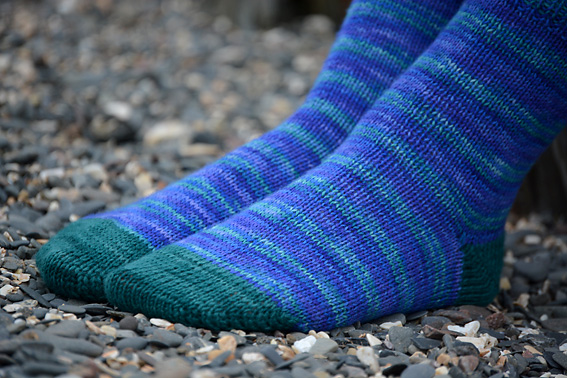
Have you used the Fish Lips Kiss Heel for knitting your heels and toes? What were your experiences with it.

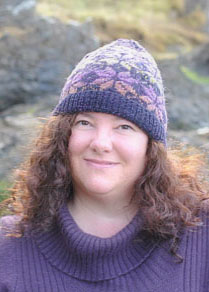
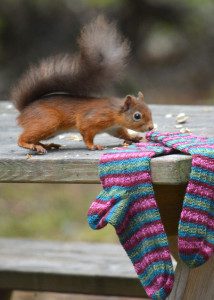
I have thought of using this heel but as I have a high instep would it be suitable?
The Fish Lips Kiss Heel is quite a shallow heel. I have read that other knitters have added a portion of gusset before knitting the heel. To be honest, I think the best choice for a high instep is a sock with a slip stitch heel flap or a dutch square heel, you can accommodate the high instep by knitting a few more rows on the heel flap and then picking up extra stitches along the edge of the heel flap. This allows you to knit a longer gusset which will be more comfortable for a high instep. Hope that helps. Happy sock knitting, Nicolette
Yes, I use the FLK heels for my socks. I knit toe up, two at a time. It is really an easy to remember technique, and most importantly, fits so well!
Hi Min, I keep intending to try knitting two at a time. But I tend to knit one sock and then cast on for the second sock immediately so it doesn’t get ignored. I’ve knit a few FLK heels now, but I must admit that my current ‘go to’ favourite sock heel is the square dutch heel. It’s just so easy. But I love trying out new heel and toe constructions when I come across them. So many ways of constructing a sock it never becomes boring! Happy sock knitting, Nicolette